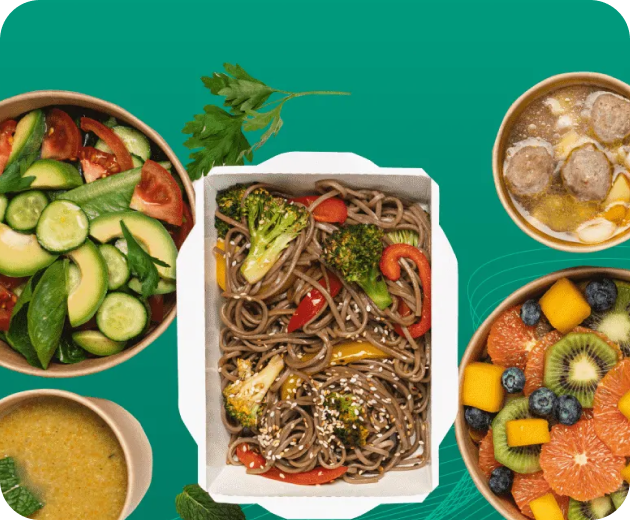Mastering Food Marketing Strategies for CPG Success
The food industry is a constant hum of activity, with countless brands vying for a place on consumers’ plates. In this dynamic environment, the correct food marketing strategies are key. It’s the bridge between the creativity behind a delicious product and the consumer’s decision to buy it.
Let’s dive in and explore some effective food marketing tactics.
What is Food Marketing?
Food marketing encompasses all the activities a company undertakes to promote its food products to consumers. It goes beyond just advertising; it’s about building brand awareness, creating a positive image, and ultimately, driving sales.
Food marketing strategies can range from traditional advertising methods like TV commercials and print ads to modern techniques such as influencer collaborations and social media campaigns.
Food marketing is an essential aspect of the food industry, as it helps companies introduce their products to potential customers and differentiate them from competitors. It also plays a significant role in shaping consumer perceptions and preferences towards certain foods.
What Are the 10 Best Food Marketing Strategies?
Food marketing strategies are as diverse as the ingredients on a chef’s table. Here’s a glimpse into the key tactics CPG (Consumer Packaged Goods) companies leverage:
1. Sensory branding
Food is an experience that engages all five senses. Marketers use visuals of mouthwatering dishes, and enticing aromas in stores, and even create soundscapes that evoke a sense of enjoyment.
2. Emotional connection
Food is often tied to memories, celebrations, and cultural traditions. Highlighting these emotional connections in marketing can resonate deeply with consumers.
3. Storytelling
Food marketing strategies often use storytelling to create a narrative around the product, its origins, and its values. People love a good story around the brand’s origin, sourcing, or values that can make a product more relatable and trustworthy.
4. Social media savvy
Today’s consumers are glued to their social feeds. Engaging content like recipe ideas, influencer partnerships, and interactive contests can create a buzz around a food product.
5. Packaging power
Packaging is a silent salesperson. Eye-catching designs, clear labeling with health claims, and convenient features can all influence purchase decisions.
6. Data-driven decisions
Food intelligence is a crucial component in the modern food industry. By meticulously analyzing consumer data, companies are able to identify emerging trends, specific preferences, and distinct buying behaviors.
This rich insight allows businesses to tailor their marketing efforts more effectively, ensuring they meet the demands and desires of their target audience.
7. Celebrity endorsements
Celebrity chefs and food influencers have a significant impact on consumer’s food choices. Partnering with them can increase brand awareness and credibility.
8. Experiential marketing
Food is meant to be enjoyed. Events, pop-up shops, and in-store demos allow consumers to interact with the product firsthand and create a lasting positive impression.
9. Promotional prowess
Discount coupons, loyalty programs, and bundled offers can incentivize purchases and encourage brand loyalty.
10. Public relations powerhouse
Positive media coverage and strategic partnerships with relevant publications and influencers can build brand credibility and trust.
Food Marketing Examples to Feast Your Eyes on
- Sensory Branding in Action: Think of the irresistible aroma of freshly baked bread wafting from a bakery, or the satisfying crackle of a potato chip bag.
- Emotional Connection at its Finest: A heartwarming commercial depicting a family enjoying a delicious meal together can evoke nostalgic feelings and positive associations with the brand.
- Storytelling that Sells: A coffee brand highlighting its commitment to fair-trade practices and sustainable sourcing connects with socially conscious consumers.
- Packaging that Pops: Eye-catching packaging with vibrant colors, bold fonts, and attractive designs can make a product stand out on the shelves and entice consumers to try it.
- Influencer Marketing at its Best: Influencer marketing, especially in the CPG industry, has taken off in recent years. Brands partner with popular social media personalities to promote their products and reach a wider audience.
- Interactive Experiences to Remember: Sampling booths at grocery stores or interactive pop-up shops can give consumers a chance to try new products and engage with the brand, leaving a lasting impression.
How Food Marketing Affects Consumers
Food marketing undeniably wields immense power over consumer behavior. A study published in the Journal of Public Health found that children exposed to frequent food marketing are more likely to request and consume those advertised products. This highlights how marketing can drive demand for new food items, influencing dietary habits.
Food marketing can be a valuable tool for promoting healthy choices. Campaigns can highlight the benefits of nutritious ingredients, like whole grains or fresh produce.
This promotes a healthier lifestyle and can influence consumers to make more conscientious food choices.
In contrast, misleading or deceptive marketing can create confusion for consumers. Labels like “all-natural” or “made with real fruit” can be misleading if the product contains high levels of added sugar or artificial ingredients. This highlights the importance of ethical and transparent food marketing practices.
The Role of Food Intelligence in Responsible Food Marketing Strategies
On the flip side, the focus on aesthetics and emotional triggers can sometimes overshadow the nutritional value of a product. Here’s where food intelligence steps in.
By analyzing consumer data, social media conversations, and industry trends, CPG companies can gain valuable insights into consumer preferences and health priorities. This allows them to:
- Develop products that are both delicious and nutritious.
- Craft marketing campaigns that emphasize the health benefits alongside the taste and enjoyment.
- Promote responsible consumption by encouraging mindful eating habits.




